January 2015 Newsletter
January 16th, 2015 by Global Down Syndrome Foundation
Meeting President Obama, Global & Alzheimer’s Association fund $2+ mil, Designer Roberto Coin, Sie Center’s Pat Winders, Global’s DC Gala & More
Private: Global Down Syndrome Foundation names David Charmatz as Senior Vice President to lead strategic growth and development
January 15th, 2015 by Global Down Syndrome Foundation
DENVER (January 15, 2015) – The Global Down Syndrome Foundation (“Global”) announced today that seasoned market research and product development veteran David Charmatz will join Global as its first Senior Vice President. Charmatz joins Global with more than 30 years of experience in the television, film and Internet field at some of the nation’s leading media companies. As Global’s Senior Vice President, Charmatz’s top priorities will be growing the personnel and revenue in order to better serve the needs of people with Down syndrome nationally and internationally.
Charmatz served in a variety of Senior Vice President capacities at Starz Entertainment for nine years – most recently as Senior Vice President of Product Planning and Development. In that role he leveraged the network’s assets to both grow Starz’s subscriber base and the company’s multi-platform product offerings. Before joining Starz in 2001, Charmatz was EVP/COO of ASI Entertainment and VP of Site Planning for Nickelodeon Online. He also held key positions at MTV Networks, Nickelodeon, A&E TV Networks, Turner Broadcasting Sales and CNN.
During his career, Charmatz has had a keen interest in the nonprofit world. He served as Chairman of the Board of the Denver Film Society and sits on various boards and committees associated with The Denver Foundation, the Colorado Film School, Colorado’s Media Leaders Roundtable, Colorado’s Arts Affinity Group and several other nonprofits.
“I have known David for years and respect his amazing talents in business and management,” said Michelle Sie Whitten, President and CEO of Global. “Everyone at Global has gotten to know him as he generously helped us launch Down Syndrome World quarterly magazine – the first national magazine specifically for the Down syndrome community. We are confident David will help lead the organization into the next era and that will result in helping thousands more people with Down syndrome and their families.”
“I am honored to join Global Down Syndrome Foundation as its first Senior Vice President. I have watched the organization grow and help so many people with Down syndrome through medical care, research and programming. I am committed to empowering and growing the team and to helping Global reach its full potential,” Charmatz said. “I’m excited to help build a future where we can significantly improve the quality of life for people with Down syndrome.”
Fashion designer Roberto Coin supports Global
January 5th, 2015 by Global Down Syndrome Foundation
through long-time Global partner Hyde Park Jewelers. A recent dinner with the famous Italian jewelry designer and thought-leader raised nearly $20,000.
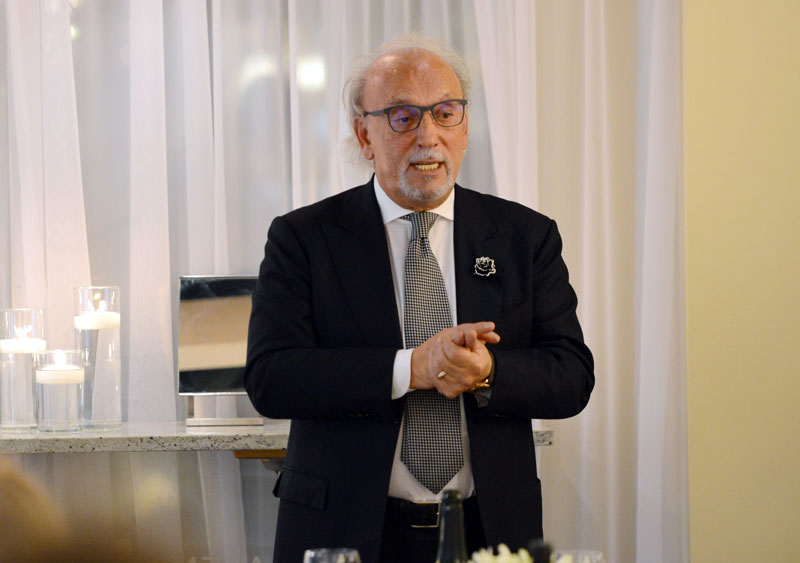 Internationally renowned jewelry designer Roberto Coin lent his help to benefit the Global Down Syndrome Foundation on December 10, 2014, as long-time Global partner Hyde Park Jewelers hosted a benefit dinner.
Internationally renowned jewelry designer Roberto Coin lent his help to benefit the Global Down Syndrome Foundation on December 10, 2014, as long-time Global partner Hyde Park Jewelers hosted a benefit dinner.
A portion of the proceeds from the dinner, at Pasta Pasta Pasta in Denver’s Cherry Creek North, went to Global, resulting in a gift of nearly $20,000. It’s the latest contribution in a long line of support from Hyde Park Jewelers. Hyde Park owners Shereen & Michael Pollak announced at the event that Hyde Park will continue to provide marquee items for the live auction at Global’s Be Beautiful Be Yourself Fashion Show. Past live auction gems from Hyde Park Jewelers have included trips to the Kentucky Derby paired with exclusive Longines watches, and a trip to Geneva, Switzerland, paired with an exclusive timepiece from Vacheron Constantin.
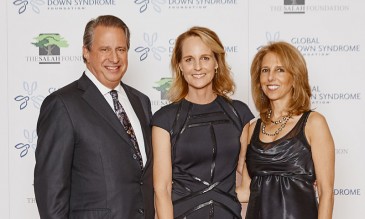
Michael and Shereen Pollak with Helen Hunt
Hyde Park Jewelers is one of the top 25 independent jewelers in the nation, with headquarters in Denver and stores at Denver’s Cherry Creek Shopping Center, Las Vegas and Phoenix.
Roberto Coin is one of the most sought-after jewelry brands in the world. From the Roberto Coin website:
In 1977, Roberto Coin founded the company that would bear his name in Vicenza, the city of Gold. Initially, the company was intended for production on behalf of some of the most prestigious brands of international fine jewelry. The Roberto Coin brand was launched in 1996. Success was quick and extraordinary. By 2000, only four years after the brand’s birth, Roberto Coin positioned itself seventh amongst the best-known jewelry brands in the United States. Two years later in 2002, the brand ranked third in the international panorama and first among Italian jewelers. The headquarters is in Vicenza, Italy and is assisted by foreign branches as well as by Roberto Coin Inc. on Fifth Avenue in New York City.
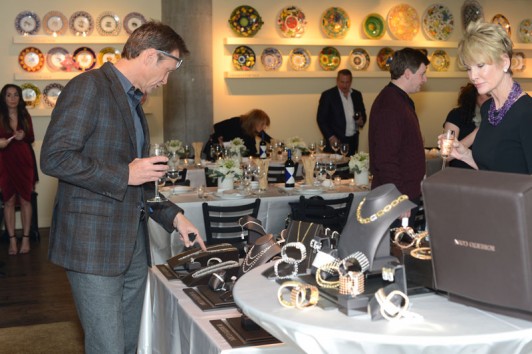 Hyde Park features a Roberto Coin boutique at its Denver location and says of the jewelry: Roberto Coin jewelry was the first to make use of three color gold which rapidly became a fashionable jewelry trend worldwide. Roberto Coin designs are known for their innovative craftsmanship and trendsetting use of color, whether rose, yellow or white gold or colored gemstones. The Roberto Coin design team uses age-old jewelry design techniques with modern innovations to create his famous necklaces, earrings and more.
Hyde Park features a Roberto Coin boutique at its Denver location and says of the jewelry: Roberto Coin jewelry was the first to make use of three color gold which rapidly became a fashionable jewelry trend worldwide. Roberto Coin designs are known for their innovative craftsmanship and trendsetting use of color, whether rose, yellow or white gold or colored gemstones. The Roberto Coin design team uses age-old jewelry design techniques with modern innovations to create his famous necklaces, earrings and more.
Global is thankful for the support of Hyde Park Jewelers and Roberto Coin and looks forward to continuing partnerships in the future.
Renowned expert Patricia C. Winders shares her views
January 4th, 2015 by Global Down Syndrome Foundation
on the Sie Center for Down Syndrome at Children’s Hospital Colorado and her hopes for children with Down syndrome
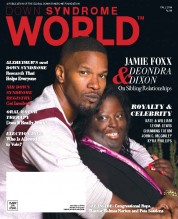
This article is an excerpt from Down Syndrome World magazine, a publication of the Global Down Syndrome Foundation. To receive Down Syndrome World, become a member of the Global Down Syndrome Foundation today at www.DownSyndromeWorld.org
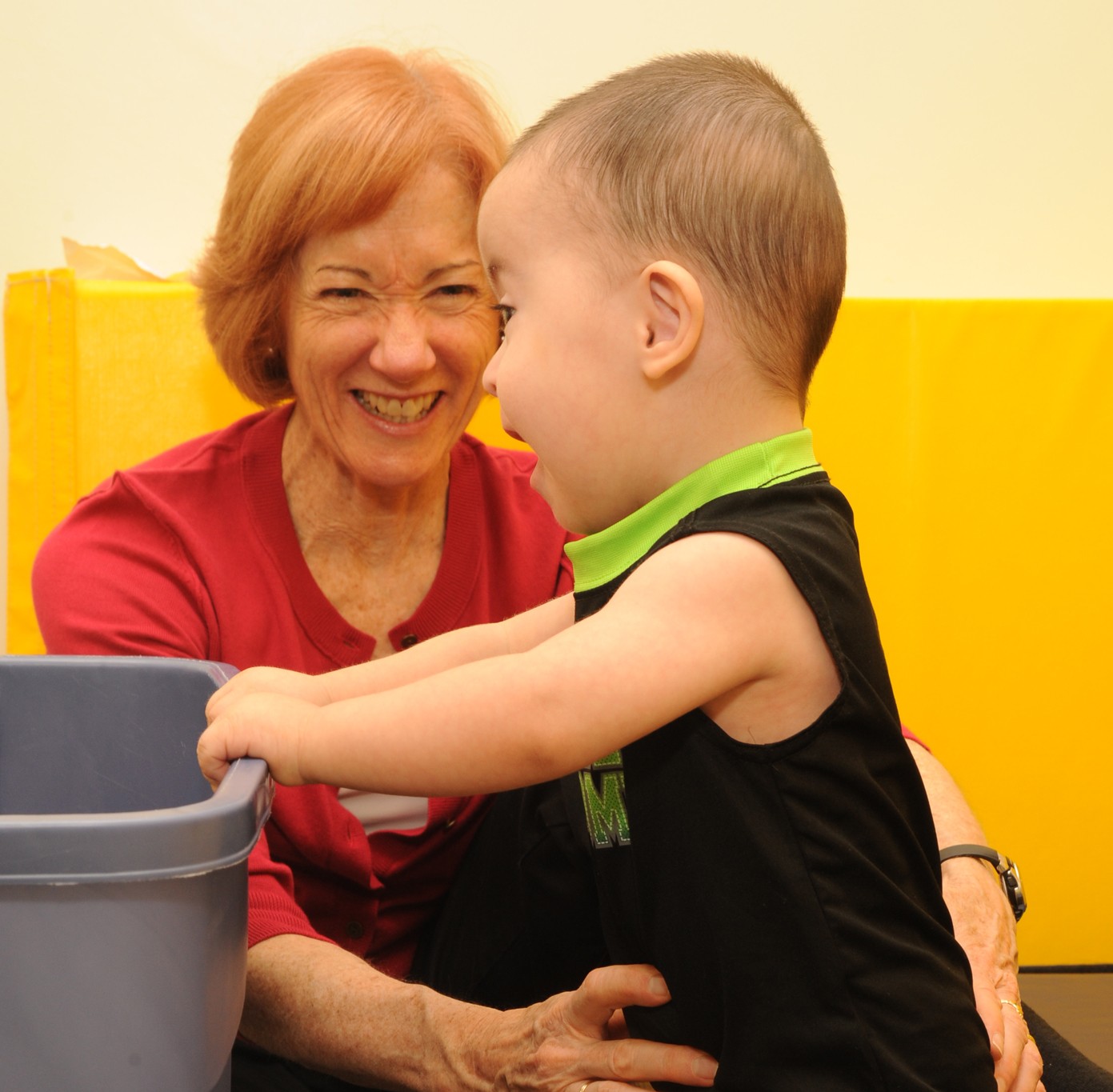
Described by her colleagues as “the most respected person in the field of Down syndrome and physical therapy,” Winders belongs to a passionate team of experts and empowers thousands of children with Down syndrome. Winders, Senior Physical Therapist and Director of Therapies at the Sie Center, is a kind, patient, yet no-nonsense sort of expert. The author of “Gross Motor Skills for Children with Down Syndrome: A Guide for Parents and Professionals (Second Edition),” she has often been quoted on her philosophy: “Physical therapy is a critical service, not because it will accelerate a child’s rate of development, but because it will improve a child’s long-term functional outcome.”
Winders, who has been with the Sie Center since it opened, recently spoke about her dream job.
Q: What were your plans when you came to the Sie Center?
Q: Tell us about the care team.
Q: How do you approach your specialty, physical therapy?
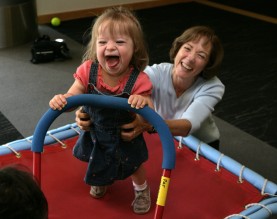
Q: What atmosphere have you created at the Sie Center?
Helpful Tips from Patricia C. Winders
From “Down Syndrome Quarterly”
Follow the child’s lead
The child must be motivated to perform a particular skills. Trying to impose your will on a child with Down syndrome is a losing game. I often try to model my style of interaction after the parent’s. It is familiar to the child and most likely to be successful.
Be strategic in providing support
Children with Down syndrome tend to become quickly dependent on support. Provide as little support as possible while still allowing the child to succeed and remove the support as soon as possible.
Contact the Sie Center at 720-777-6750.
Global teams up with Alzheimer’s Association
January 2nd, 2015 by Global Down Syndrome Foundation
Awarding a total of $2.2 mil in Down syndrome-Alzheimer’s research grants. Samuel L. Jackson shares how his family has been affected by the disease
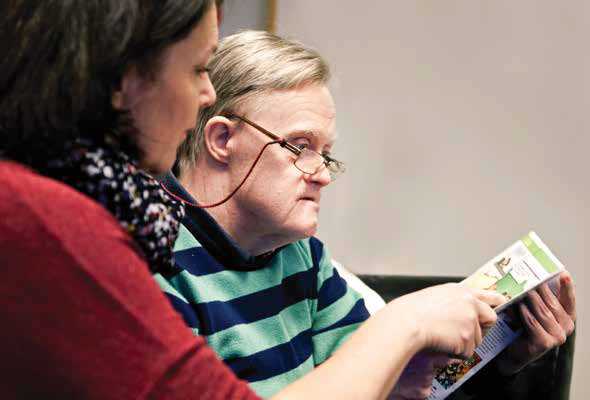
For the second year in a row, Global Down Syndrome Foundation, the Alzheimer’s Association and the Linda Crnic Institute for Down Syndrome are teaming up to to better understand the development of Alzheimer’s disease in individuals with Down syndrome and translate the research into improved treatments for people at risk to develop Alzheimer’s.
The organizations are supporting this growing area of study through a joint grant initiative called “Understanding the Development and Devising Treatments for Alzheimer’s Disease in Individuals with Down Syndrome.”
Why Down syndrome-Alzheimer’s disease research is important
One in eight older Americans suffers from Alzheimer’s disease, and 5.4 million Americans have Alzheimer’s today, with an estimated 13 million by 2050. One hundred percent of people with Down syndrome have the brain pathology of Alzheimer’s disease, and an estimated 50 percent will develop the symptoms before age 50. Recognizing that these conditions are “two sides of the same coin” and studying them together will hasten the development of new treatments for both.
The effects of Alzheimer’s are well-known, but it’s the personal stories that really make an impact. In a magazine article and video with the Hollywood Reporter, film megastar Samuel L. Jackson talks about his family’s “heartbreaking” struggle with Alzheimer’s. Read more at www.hollywoodreporter.com/news/samuel-l-jackson-opens-up-725419 and watch the video below.
2015 Research Grants
Global and the Alzheimer’s Association have already awarded $1.2 million in research grants to scientists around the world studying the connection between Down syndrome and Alzheimer’s disease, and a second round of grants, totaling $1 million, will be announced soon.
Previous Research Grants Awardees and Their Projects
In response to a Request for Application, more than 50 applications from around the world were received and vetted by the extensive peer review system at the Alzheimer’s Association with input from the Crnic Institute. The process resulted in five grants, including:
Three grants for senior investigators, each totaling $300,000:
- Investigator: Dr. Huaxi Xu, Sanford-Burnham Medical Research Institute, La Jolla, CA
Title: Roles of miR-155/C/EBPß/SNX27 pathway in Alzheimer’s disease/DS
- Investigator: Dr. Ann-Charlotte Granholm, Medical University of South Carolina, Charleston, SC
Title: Brain-derived neurotropic factor and executive dysfunction in DS
- Investigator: Dr. Karen Chang, University of Southern California, Los Angeles, CA
Title: Functional protein interactions in Alzheimer’s disease and DS
Two grants for new investigators, each totaling $150,000:
- Investigator: Dr. Donna Wilcock, University of Kentucky Research Foundation, Lexington, KY
Title: Inflammatory biomarkers to predict transition to dementia in DS
- Investigator: Dr. Eitan Okun, Bar-Ilan University, Ramat-Gan, Israel
Title: Developing a DNA vaccine for Alzheimer’s disease in patients with DS

 Experience our inspirational and groundbreaking videos and photos. Our children and self-advocates are beautiful AND brilliant!
Experience our inspirational and groundbreaking videos and photos. Our children and self-advocates are beautiful AND brilliant! Make sure your local Representatives are on the Congressional Down Syndrome Task Force.
Make sure your local Representatives are on the Congressional Down Syndrome Task Force.